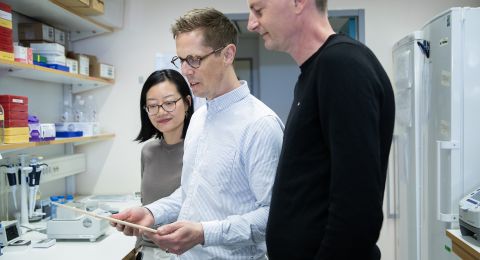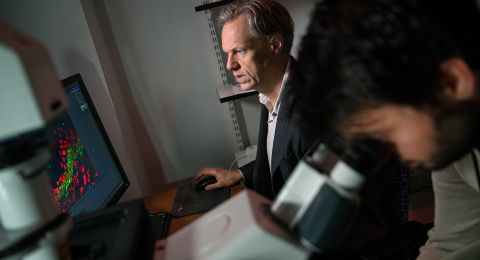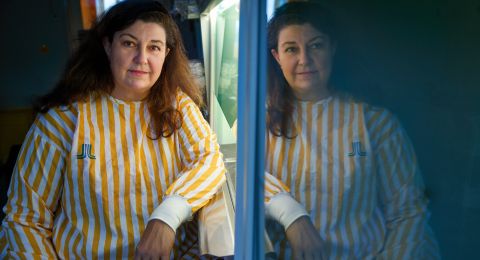
Project Grant 2014
Identifying stem cell states and state transitions
Principal investigator:
Stefan Karlsson, Professor of Molecular Medicine
Co-investigators:
Tariq Enver
Jonas Larsson
Kenichi Miharada
Björn Nilsson
Karolinska Institutet
Roman Zubarev
Institution:
Lund University
Grant in SEK:
SEK 42.7 million over five years
Stem cells lie dormant in the body throughout our lives, ready to be activated if we are injured or fall ill. When a patient has a bone marrow transplant, which may be part of the treatment for leukemia, the stem cells are the target. They can reproduce in the body into which they are transplanted, and create a new, working blood system. But although stem cells have been the subject of much research over the past few decades, many questions remain unanswered. For instance, we do not know what changes in the stem cell when it moves from its passive to its active state, or what triggers the change.
Learning from cells at different stages
Dormant stem cells in healthy animals and people have already been thoroughly studied. Stem cell researchers also know a fair amount about the role played by individual genes when stem cells build up a new blood system. That knowledge has been obtained by studies on animals in which stem cells with different genes knocked out have been transplanted so as to form the basis for new blood. But in both cases, stem cells have been studied while stable: before or after activation.
“We want to see what happens at the precise moment that a stem cell changes from dormant to active but before it starts to divide. One thing we want to find out is whether there are molecules controlling activation,” says Professor Stefan Karlsson, of Lund University.
He researches at the Department of Molecular Medicine and Gene Therapy, and is one of the leaders of an interdisciplinary project funded by the Knut and Alice Wallenberg Foundation. The research team in Lund, together with their colleagues at Karolinska Institutet, will be endeavoring to study cell development at a level of detail not previously achieved.
The team will be transplanting stem cells in mice, and then removing stem cells at various stages of development from the new blood systems of the mice, in order to examine the changes taking place in the cells while they are building up a new blood system.
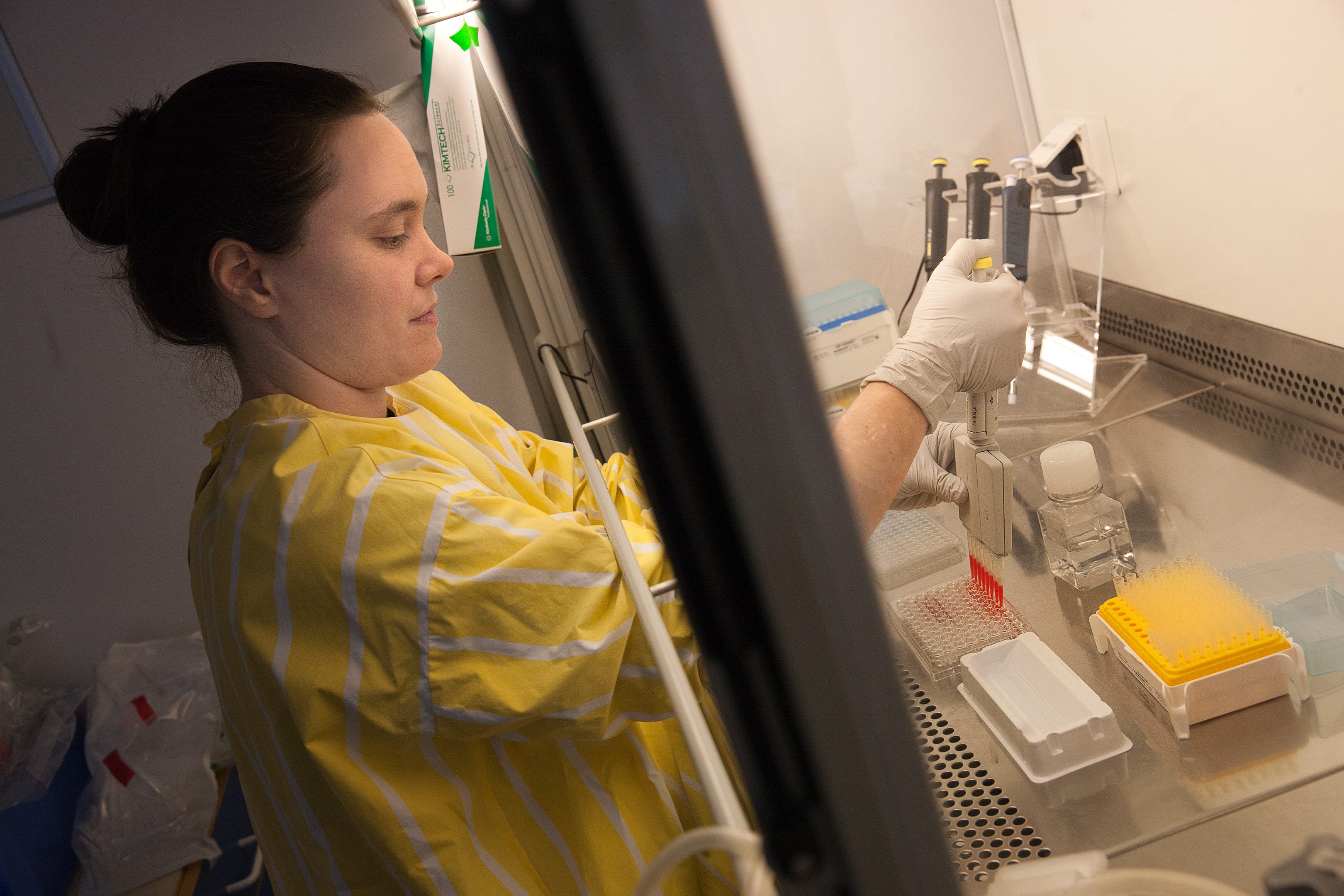
“There is no tissue in which stem cells can be studied in as much detail as the blood. But even though we will be concentrating on the blood system, our findings will have general validity, and will probably apply to other tissue as well,” explains Jonas Larsson, who works in the same department at Stefan.
Hard to get enough cells
The two researchers agree that the idea that cells have active and passive phases is accepted among stem cell researchers. But no one has presented concrete evidence of this, something the researchers hope to do in this project. They think that the methods hitherto used to study the phenomenon have been too unspecific. For instance, stem cells at different stages of maturity have been compared with one.
“This results in a lot of ‘static’ – things that are different because you are in fact looking at different cells. We hope to capture the same identity, the same cell, but in different phases, and so find the key controlling components,” Jonas explains.
One difficulty is that there are so few stem cells in the body. Numerous attempts are needed to obtain sufficient material to analyze, something that the new project will enable the researchers to do. Various research fields are also being combined in a way that Stefan thinks is unusual: stem cell biology is being combined with mathematics and proteomics (mapping of cell protein content).
“It is an ambitious project – and a risky one,” Stefan admits.
If the researchers do not obtain enough stem cell material, they will not be able to make good analyses. Alongside the transplant studies, they are conducting some fairly simple experiments, in which they compare blood stem cells from the livers of fetal mice with others from the bone marrow of adult mice. Stem cells from the liver are probably highly active, whereas bone marrow cells are dormant. This is a “safer” experiment, but the researchers have greater belief in the transplant studies, provided they succeed.
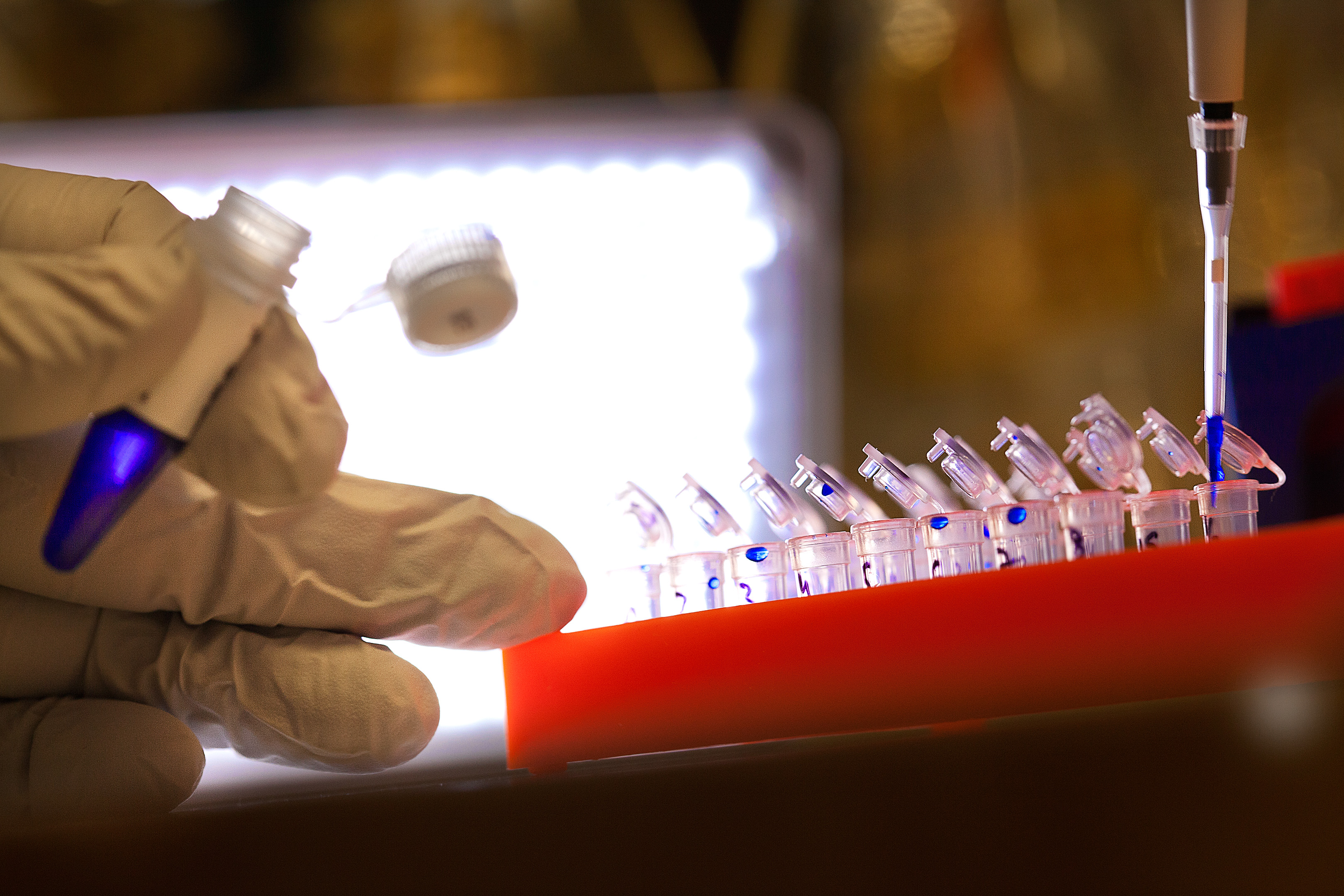
More patients helped by the research
Stem cells are likely activated with the help of various chemical signals, produced inside the cell, and in other parts of the body, e.g. where damage has occurred. But we do not know the order in which this takes place or even if this is really what happens. There may be hitherto unknown signals that the researchers in Lund and at Karolinska Institutet will find.
With better knowledge of the mechanisms controlling these cells, it may become easier to grow stem cells in the lab.
“That would enable us to treat more patients who are in need of stem cell transplants. Both Jonas and I have medical backgrounds. Although much of what we are doing is basic research, the medical potential offered by our research is primarily what drives us,” Stefan adds.
Text Lisa Kirsebom
Translation Maxwell Arding
Photo Magnus Bergström
